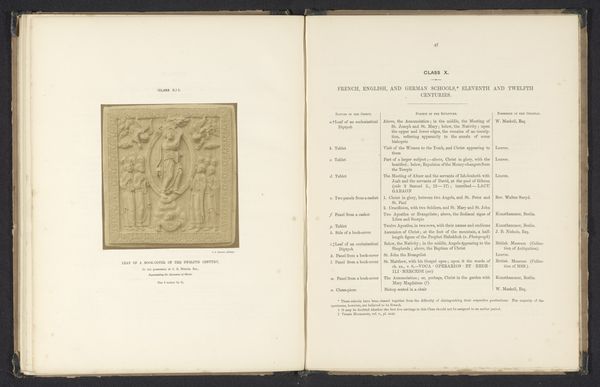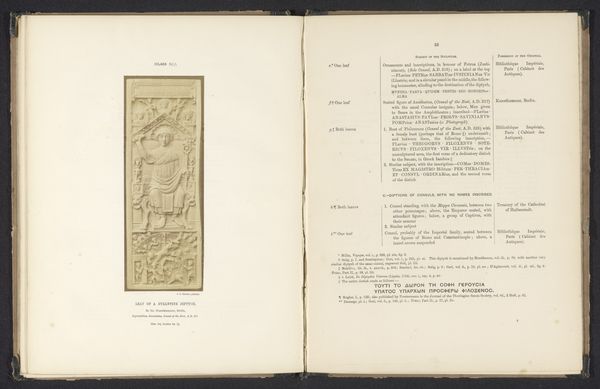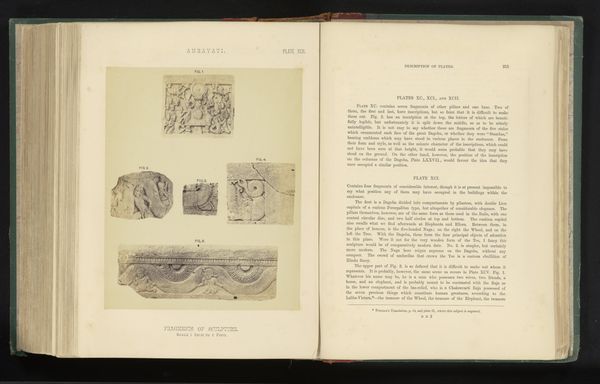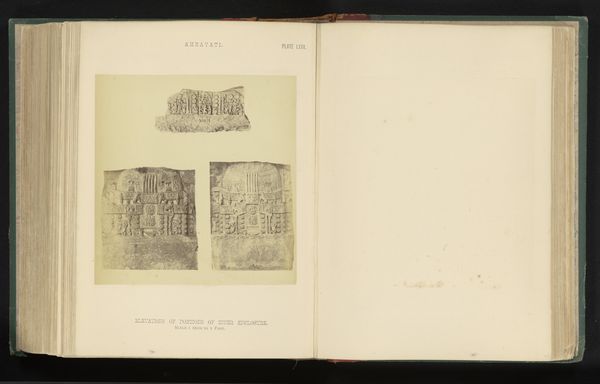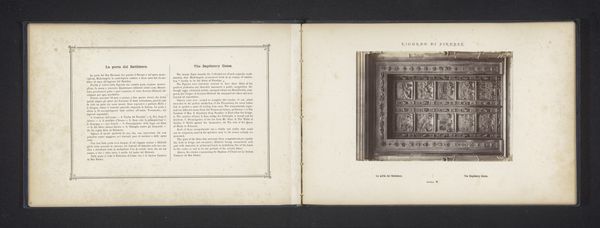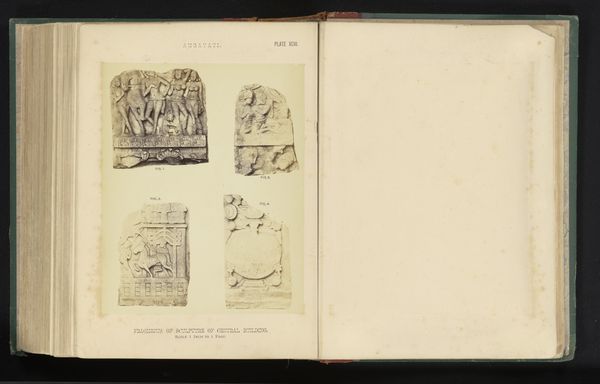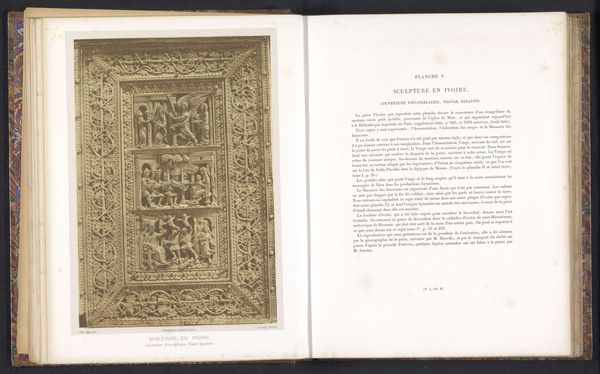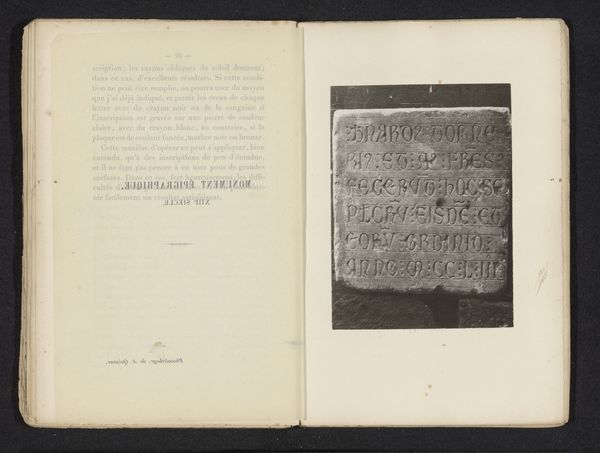
Notices of sculpture in ivory, consisting of a lecture on the history, methods, and chief productions of the art 1856
0:00
0:00
print, engraving, ivory
# print
#
history-painting
#
academic-art
#
engraving
#
ivory
Dimensions: height 292 mm, width 225 mm, thickness 9 mm
Copyright: Rijks Museum: Open Domain
Editor: Here we have “Notices of Sculpture in Ivory, consisting of a lecture on the history, methods, and chief productions of the art,” printed in 1856. It seems to be an engraving of what appears to be a carved ivory panel. The figures seem quite classical. What do you make of it? Curator: Well, let’s consider the Arundel Society, who published this. They were vital in Victorian England, weren’t they? Their prints made art, especially previously inaccessible works, available to a wider public, shaping tastes and understanding. Editor: So, they were trying to democratize art through these publications? Curator: Precisely. And ivory was a prized material. This print reproduces an ivory carving – a luxury item – and makes it accessible, affordable even, to a middle-class audience. The choice to disseminate knowledge of it shows how Victorians sought to engage with historical forms, using prints to communicate art. Think about what that means for who gets to learn about, or participate in, conversations around 'high' art. Editor: It is interesting how printing influences who can view, engage, and comment on artwork, making this a new platform for art. Do you believe that they truly grasp the history and production behind art, just by owning prints? Curator: Grasping is perhaps ambitious. Yet, this lecture sought to educate, positioning art as a marker of culture, civility and knowledge – a form of cultural capital for the Victorian middle class. The question isn't necessarily *did* they understand it fully, but *how* did these publications shape cultural values, artistic production and what was perceived as progress at the time? Editor: So, it is more than just about appreciating art, it's about the social impact and who gets to define “good art”? It makes you think about our art world today as well. Thanks, I didn't consider it that way! Curator: Exactly! Seeing art as enmeshed within broader cultural forces is crucial. Looking at it that way can prompt a much wider view.
Comments
No comments
Be the first to comment and join the conversation on the ultimate creative platform.
